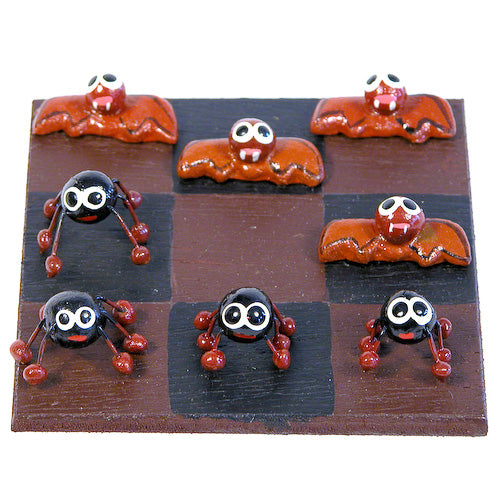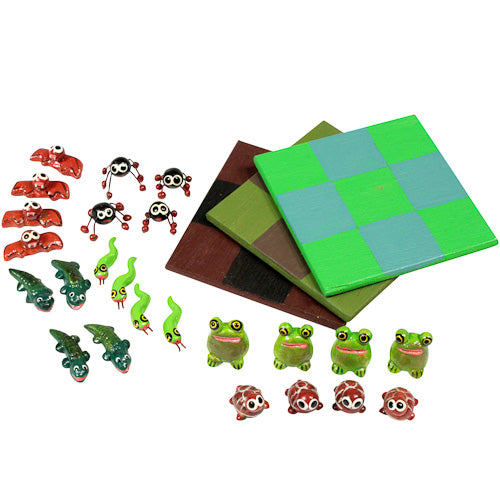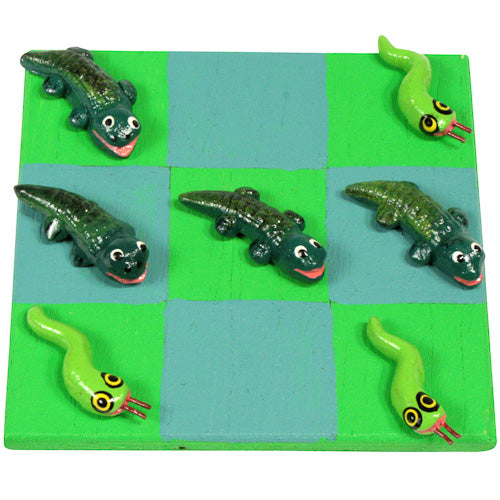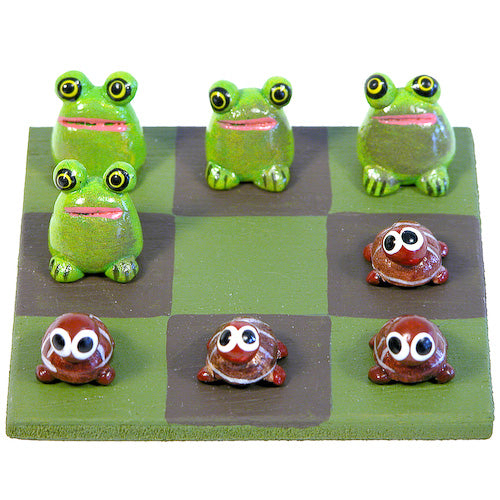OWP
Juego Maya Tic Tac Toe - Murciélagos vs Arañas
Juego Maya Tic Tac Toe - Murciélagos vs Arañas
No se pudo cargar la disponibilidad de retiro
Disfrutarás de nuestro juego Tic-Tac-Toe hecho a mano por los artesanos de De La Selva en Guatemala. Un divertido juego de mesa para pasar tiempo de calidad. Un conjunto de 8 lindas figuras de animales y un tablero pintado a mano. Es una excelente actividad en viajes y picnics.
Sapo: llamado Bab en maya. Este animal está relacionado con los rituales del agua y es considerado el mensajero de una diosa.
Tortuga: Los mayas relacionaban este animal con el agua. Para los mayas, su concha simboliza la forma circular de la tierra, la cual era utilizada como instrumento musical, y también para reproducir el sonido del relámpago procedente de la lluvia.
Murciélago: llamado Tzotz en maya, este animal nocturno se relaciona con la muerte, el sacrificio y las fuerzas de la oscuridad.
Araña: Los mayas relacionaban este insecto con lxchel: diosa de la salud en el nacimiento, el embarazo y la fertilidad.
Serpiente: llamada Caani en maya. Se cree que las deidades del agua y la fertilidad de la tierra están relacionadas con este poderoso animal.
Cocodrilo: En la cosmología maya, un enorme cocodrilo sostenía la tierra. Los mayas creían que era una fuente de gran poder.
Para los antiguos mayas de Guatemala, cada animal representaba un sentimiento, estaba relacionado con un ritual o estaba conectado con el medio ambiente. Juegue Mayan Tic-Tac-Toe y aprenda sobre lo que los mayas creían que representaban estos animales.
- Hay tres diseños de tablero disponibles: Sapo contra Tortuga, Murciélago contra Araña y Serpiente contra Cocodrilo.
- Cada tablero mide 3-1/2" x 3-1/2", y las piezas del juego miden 1/4" - 3/4".
Hecho a mano en Guatemala e importado de comercio justo.
Para obtener más información sobre los talentosos artistas y la técnica que utilizan para crear estos artículos ecológicos, haga clic en "Acerca de los artesanos" a continuación.Share
About the Artisans
About the Artisans
 Joyeria Semilla meaning Seed Jewelry is a small fair-trade workshop in the Andean town of Villa de Leyva, Colombia. Girasol Taborda, a local artisan and social entrepreneur, started the workshop in the mid-1990s.
Joyeria Semilla meaning Seed Jewelry is a small fair-trade workshop in the Andean town of Villa de Leyva, Colombia. Girasol Taborda, a local artisan and social entrepreneur, started the workshop in the mid-1990s.
Joyeria Semilla’s objective is three-folds; to create new jobs, revive Colombia's handicrafts sector and to motivate locals to better manage their natural resources. The organization works primarily with socially and economically disadvantaged youths, single mothers and people with disabilities in the area. The company offers free training in product design, technical training and marketing to new members. Joyeria Semilla has trained them in the craft of jewelry-making.

Caña Flecha or “Gynerium Sagittatum” is a locally found palm tree in the regions of the Caribbean coast. The leaves from this plant are used for making jewelry, woven hats, bags and baskets. The Zenú Indians were and their descendants inherited the tradition of picking veins of the green palm leaf for weaving. These veins were made into woven hats and other products for their personal use.
The Zenú culture is said to have existed between 200BC to1600AD. With the arrival of the colonizers in the 16th century, the indigenous community declined of unknown reasons. Today a very small population remains that claims the inheritance of the almost extinct Zenú tribe. Known for their skills in the construction of major waterworks, canals and irrigation system along with being skilled goldsmiths, examples of their accomplished craftsmanship are found in various museums around the world. Their larger means of subsistence were hunting, farming, fishing and trading.
Caña Flecha is found in abundance in the region, and hence makes for a sustainable and naturally available raw material for these products. Every bit of the plant is utilized – from using in building walls and roofs in houses to food for cattle and medicinal purposes. It is from the central vein of the leaf that the fibers for weaving are obtained. After the hard surface is peeled off, the fibers are left in the sun to dry and undergo a natural tinting process; these fibers are barely about 1 millimeter in thickness and hence call for a lot of skill and patience to weave with. The dried fibers are then processed for natural coloration - some are boiled with lemon to whiten them and some are treated with mud and boiled with plantain leaves to blacken them. The designs are based on ancient motifs and mathematical representations, which are inspired by the early Zenú culture.








